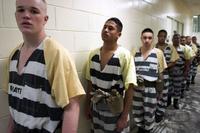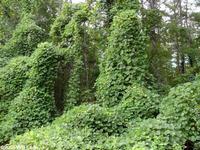-
Half of U.S. jails not in national vaccination campaign

A new study by the Centers for Disease Control and Prevention (CDC) found that more than half of U.S. jails are not included in the national flu vaccine campaign, despite the fact that jail and prison inmates are at increased risk of catching infectious diseases
-
-
Scientists urge more study of use of antimicrobial in food animals
The FDA the other day banned the use of some antibiotics in food animals in order to preserve the effectiveness of these antibiotics in humans; the EU is set to follow suit; scientists argue, however, that the use of antibiotics in the animal populations is unlikely to be the major source of drug resistance in humans, and question policies that restrict the use of antimicrobials in animals
-
-
Thousands of deadly bracelets made from toxic plant recalled

An urgent recall is underway after it was discovered that a bracelet sold in the United Kingdom was actually made from a highly toxic seed; the red and black bracelets were made with the Jequirity bean, the deadly seed from the abrus precatorious plant, which contains the toxin abrin
-
-
Better understanding of Listeria
About 20 percent of people diagnosed with listeriosis die, compared to less than 1 percent of those inflicted by Salmonella; the harmful strains of Listeria are thus more lethal than Salmonella, but it exists in benign species and strains as well; scientists discover why some forms of Listeria are fatal and others are not
-
-
FDA bans use of some antibiotic in animals
The cephalosporin class of drugs is important in treating human diseases, such as pneumonia, skin and tissue infections, pelvic inflammatory disease, and other conditions; the FDA has just restricted the use of the cephalosporin class of antimicrobial drugs in food-producing animals in order to preserve the effectiveness of these drugs in treating humans
-
-
U.S. faces new wave of invasive species

New study warns that the earlier onset of spring, warmer winters, economic globalization, and increased trade with emerging economies in Asia and Africa will see the United States face a significant new wave of invasive plant introductions; at least forty-two emerging U.S. trade partners – among them Thailand, Egypt, Saudi Arabia, Ecuador, Argentina, and several in equatorial Africa — are poised to export new nursery plant varieties to the United States
-
-
Budget cuts hamper U.S. response to biological attack
A recently released report charges that state and federal budget cuts have weakened U.S. bioterrorism response capabilities
-
-
Georgia readies portable hospitals
On Monday local health and emergency response officials from Georgia’s West Central Health District gathered to learn how to quickly set up a portable hospital in the event of an emergency
-
-
Creating drought-tolerance in crops
Researchers’ discovery creates new blueprint for engineering drought tolerant crops; the researchers found a way to rewire this cellular machinery to heighten the plants’ stress response — a finding that can be used to engineer crops to give them a better shot at surviving and displaying increased yield under drought conditions
-
-
Thai health officials prevent outbreaks in historic floods
Thanks to Thailand’s aggressive public health and emergency response operations, the country managed successfully to prevent disease outbreaks following record floods
-
-
Key to disaster preparedness is “training, training, training”

Bonnie S. Michelman, CPP/CHPA, the director of police, security, and outside services at Massachusetts General Hospital, recently took the time to speak with Homeland Security NewsWire’s executive editor Eugene K. Chow; in their interview, Michelman highlights the recent technological security measures Massachusetts General has installed, finding the right balance between security and openness, and preventing terrorists from stealing the low-grade radioactive materials that are housed in hospitals
-
-
Innovative molecular detection system spots foodborne pathogens
3M introduced the 3M Molecular Detection System, a method of detecting dangerous pathogens like Salmonella, E. coli O157, and Listeria, that can shut down businesses and threaten public health
-
-
Satellites helping to track disease outbreaks
Using satellite images of city lights at night, Princeton researchers have developed a new method to track infectious disease outbreaks
-
-
High-tech cleanser kills superbugs dead
According to the World Health Organization (WHO), antibiotic-resistant bacteria are one of the top three threats to human health; patients in hospitals are especially at risk, with almost 100,000 deaths due to infection every year in the United States alone; engineers develop an easy-to-use solution to make hospitals safer
-
-
New Ebola vaccine protects mice
An experimental vaccine against deadly Ebola hemorrhagic fever protected more than 80 percent of mice given a lethal dose of the virus, and may protect humans as well. Unlike previous experimental vaccines, the new vaccine, which is grown in tobacco plants, is also stable enough to stockpile in case of bioterrorism.
-
More headlines
The long view
We Ran the C.D.C.: Kennedy Is Endangering Every American’s Health
Nine former leaders of the Centers for Disease Control and Prevention (CDC), who served as directors or acting directors under Republican and Democratic administrations, serving under presidents from Jimmy Carter to Donald Trrump, argue that HHS Secretary Roert F. Kennedy Jr. poses a clear and present danger to the health of Americans. He has placed anti-vaxxers and conspiracy theorists at top HHS positions, and he appears to be guided by a hostility to science and a belief in bizarre, unscientific approaches to public health.
